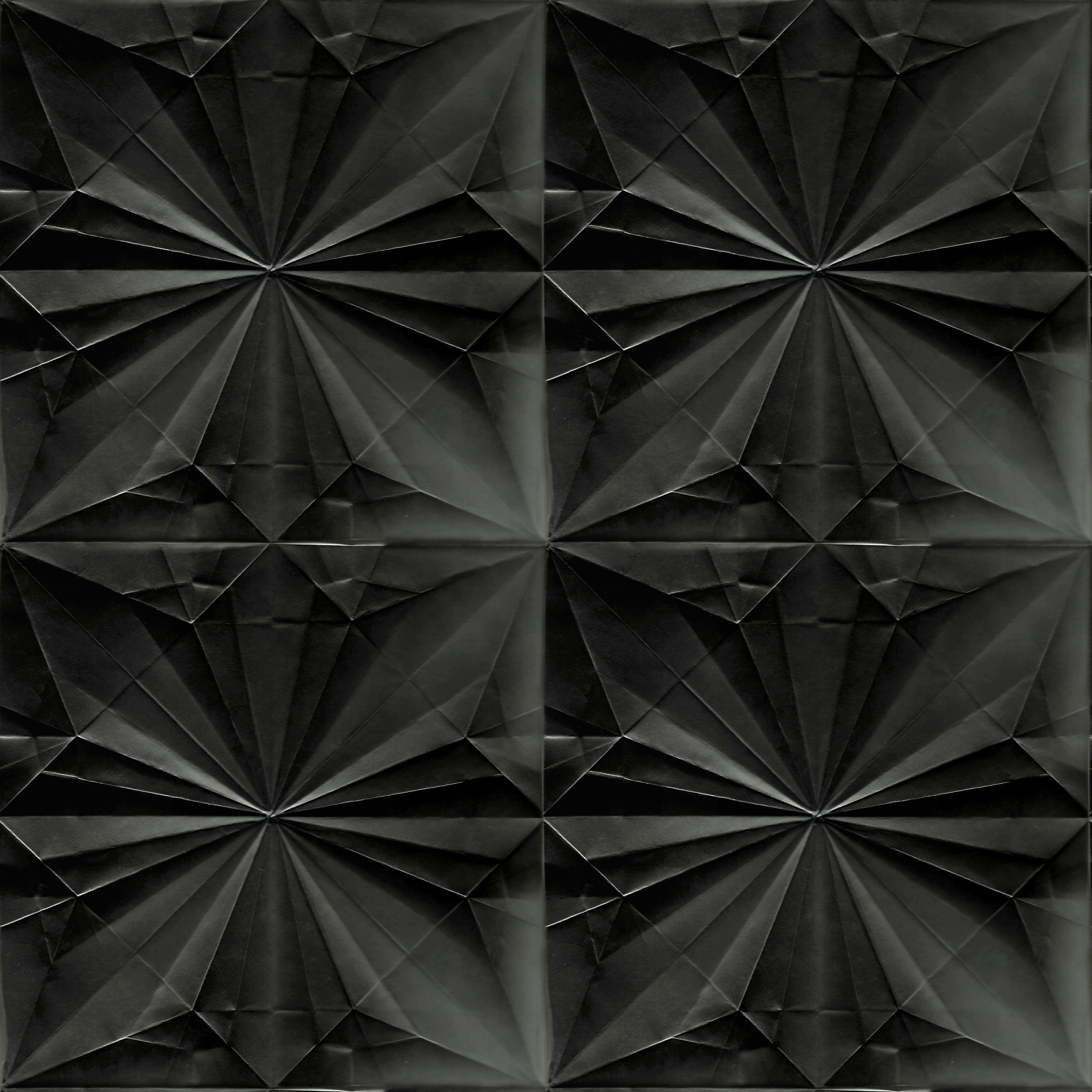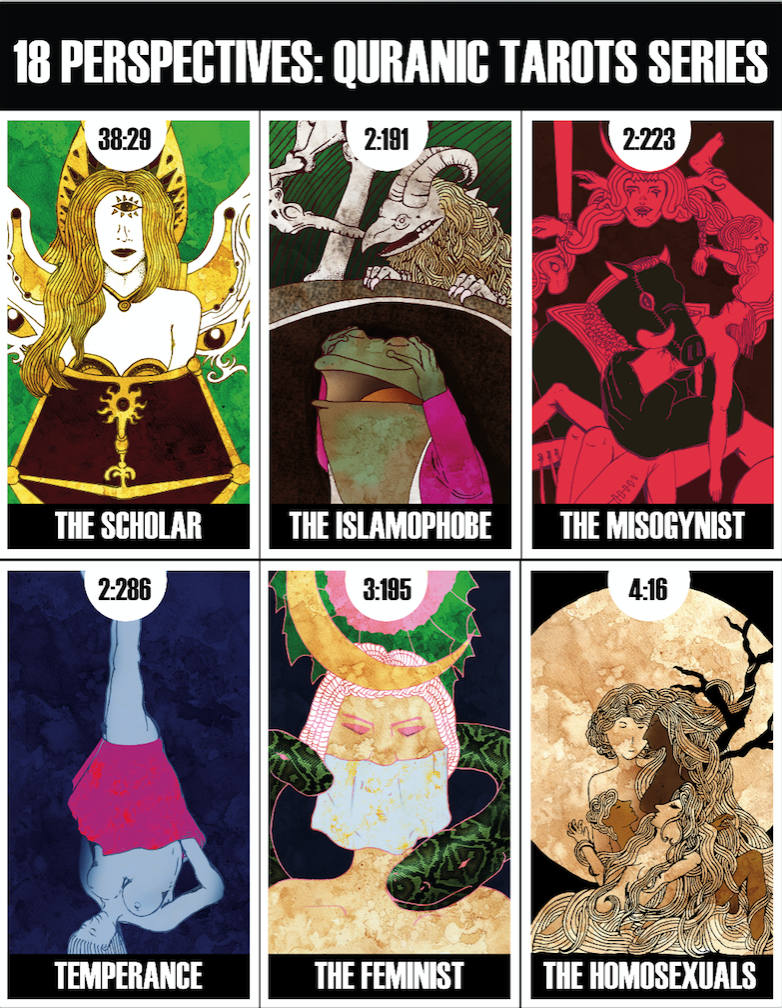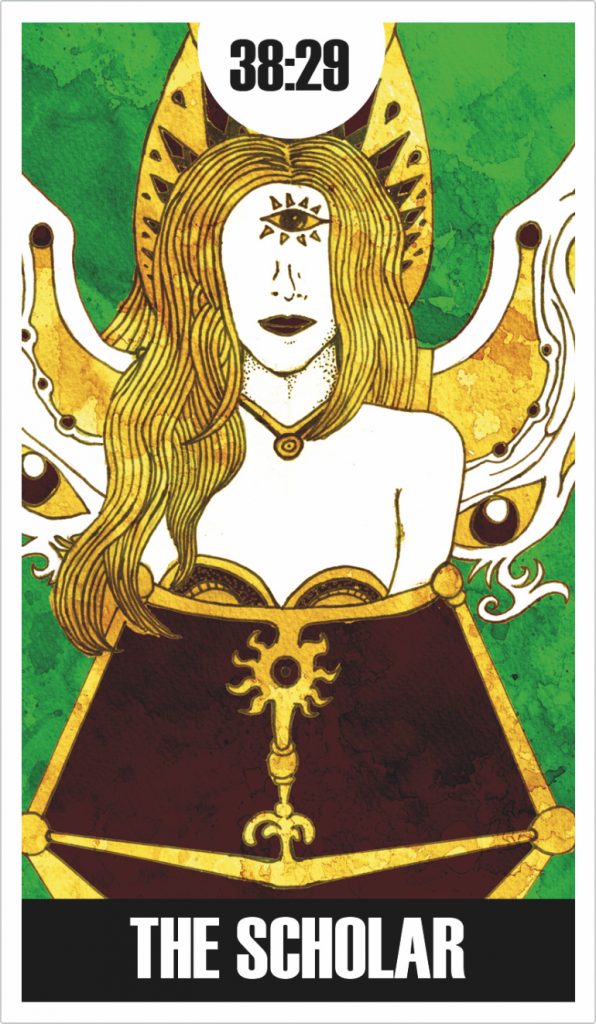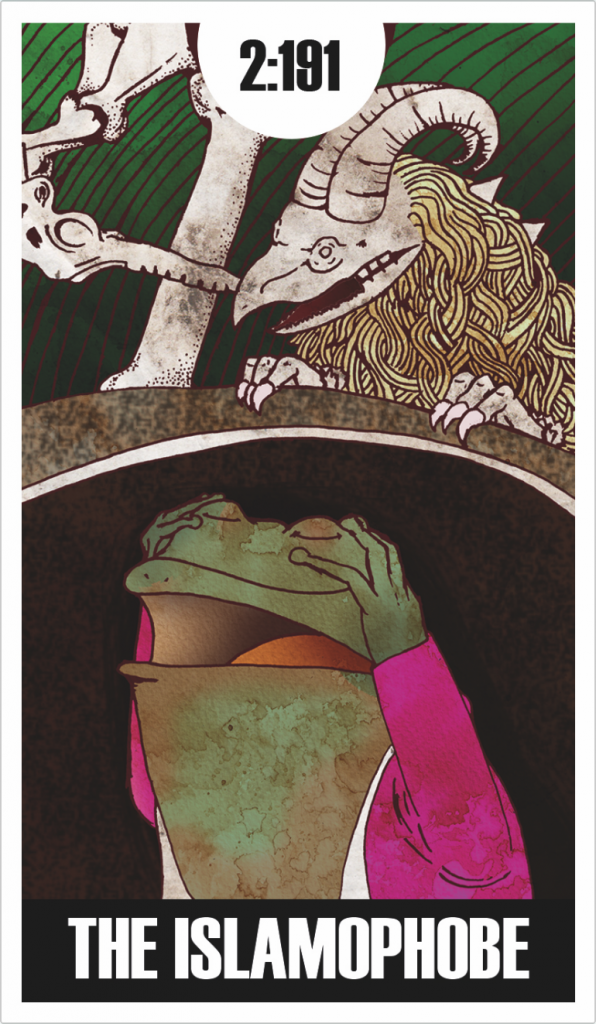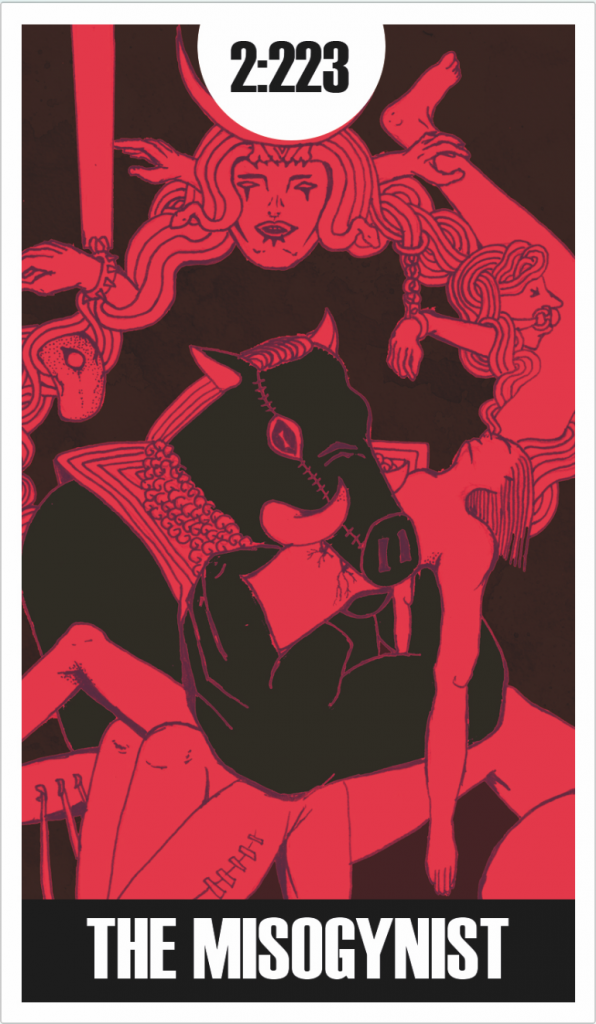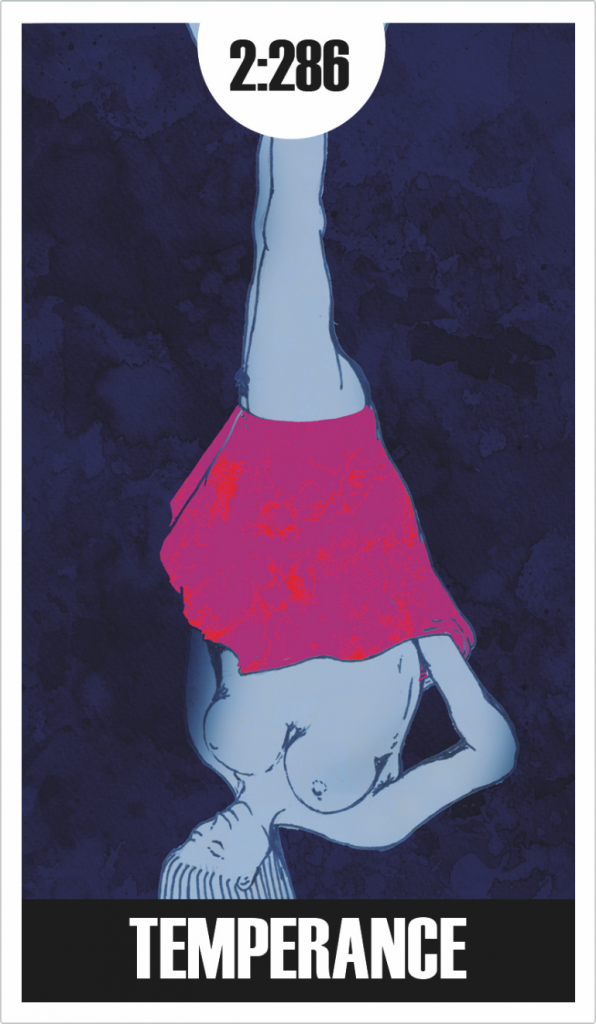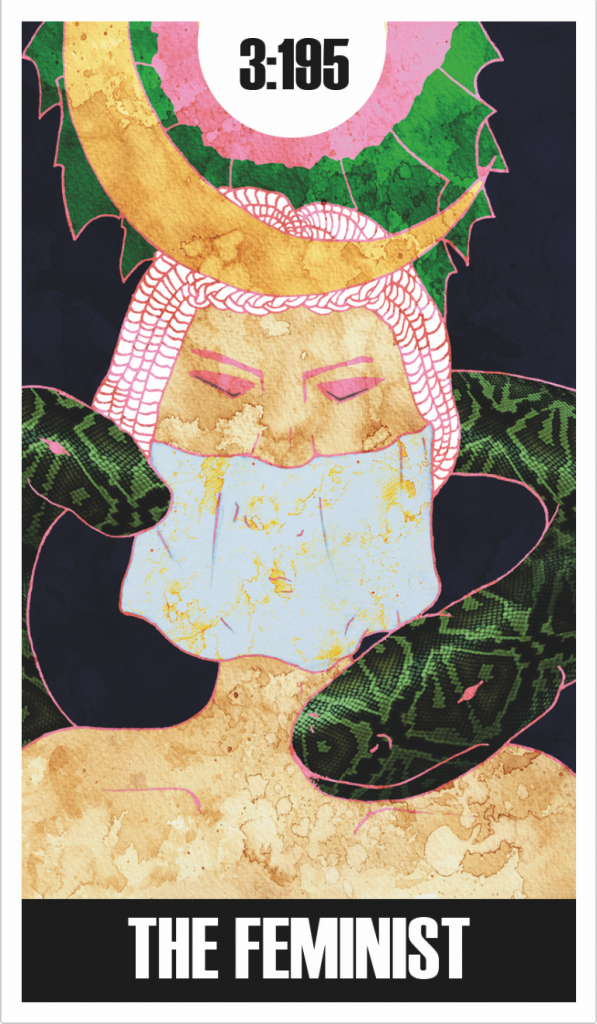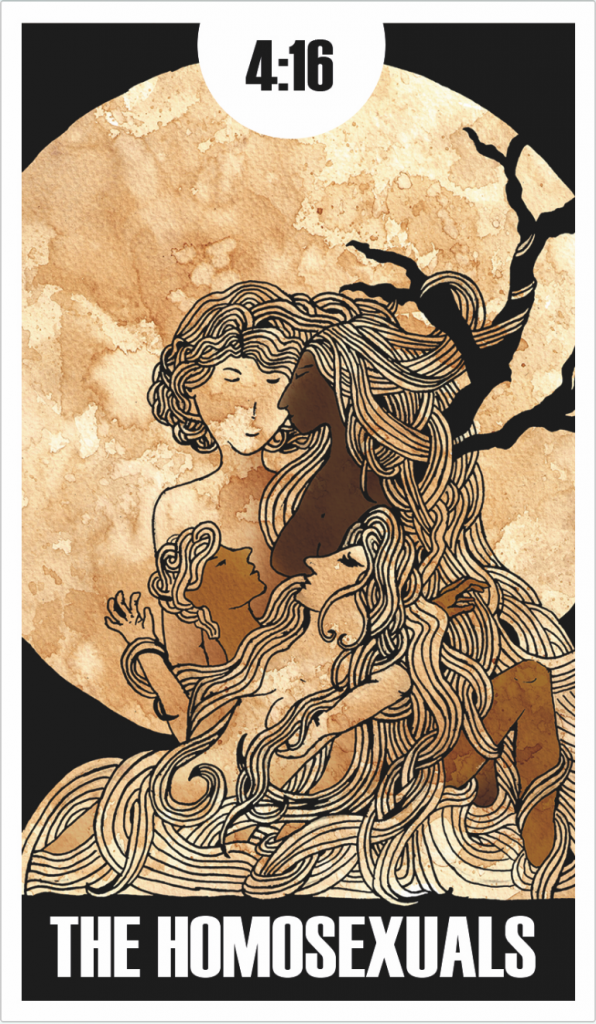The artworks that I produced for this assignment aim to further understand the literary devices in the Quran. The Quran contains verses which can sometimes be meant to be taken literary, while others utilise metaphors and require a certain amount of contextual analysis to create meaning. This openness to interpretation leads to different groups of people appropriating verses of the Quran, said to be the word from God himself though His Messenger Muhammad, to fulfil their agenda and ulterior motives.
These images were individually illustrated using micron pens and scanned into the computer to be digitally painted. I used coffee stains as a recurring element throughout my artwork. The digits at the top of each artwork represents the verse that is being appropriated, and the texts below represents the appropriator.
38:29 “…(They) may ponder over its Verses, and that those of understanding would be reminded.” – Sad (ص), Quran.
The Scholar is derived from The Chariot and The Sun in the major arcana in a standard tarot deck, representing the continuous drive to pursue knowledge, represented by the ubiquitous chariot as well as wings to seek greater heights. The image is given a warm treatment to represent the Sun as a giver of knowledge, and the Sun materialised in the Renaissance halo. I want to convey that the Quran, though absolute in essence, can be interpreted in many ways and to have a literal, puritan outlook (like the Wahabbi) without taking context into consideration is ironically a transgression itself. The chapter Sad is said to have been revealed when Prophet Muhammad was rejected from his own tribe and the struggle he faced with his faith, represented by the lack of space in the chariot, and a symbol pertaining to the dilemma between ethics and discoveries that might shake centuries-old belief.
2:191 “And slay them wherever ye catch them..” – Al-Baqara, Quran
The Islamophobe is derived from the The Hermit in the major arcana, and a visual response to the Malay proverb katak dibawah tempurung (frog under a shell) which means ignorance. I want to discuss how Islamophobes tend to cherry-pick verses that talks about violence and use it to paint muslims with a single brush. The image shows the frog closing its eyes and ears to shut alternative views other than those it subscribe to, and these views it shuts out manifested as boogeyman outside its shell that want to destroy the values it holds dear.
2:223 “Your women are a tilth for you (to cultivate) so go to your tilth as ye will…” – Al-Baqara (The Calf), Quran
The Misogynist is derived from the The Wheel in the major arcana, represented by the circle of dismembered female body parts around the boar, a metaphor for the misogynist. This verse is often an excuse for men to treat women as inferior and impure; and validates the objectification of women. That shade of red is used to convey the mood of carnal testosterone-filled hedonism. Misogynist will cite this verse as an excuse to treat women as nothing more than objects and for sexual pleasure.
2:286 “Allah does not burden a soul beyond that it can bear” – Al-Baqara, Quran
Temperance is derived from the eponymous major arcana as well as The Hanged Man. The shade of blue aims to convey the tempered patience and endurance of someone undergoing trials, and the overturned red skirt symbolises the trial one must endure. This is also a response to The Hanged Man, often depicted with unrealistic folds of cloth (e.g. the pants look like how it will be if a person stands upright).
3:185 “…I never fail to reward any worker among you for any work you do, be you male or female — you are equal to one another.” – Al-Imran (House of Imran), Quran
The Feminist is my equivalent of The High Priestess in the major arcana. Females are often rarely studied in the Quran and are subjected to misrepresentation due to the patriarchal nature of society. This is represented by the veil, the fact that women’s voices were often drowned by the voices of men. Symbols often used to historically depict women were used, such as the moon, the colour pink, and snake (to represent a women’s wile into straying men into the wrong path). This verse is used by feminists to justify the equal standing of men and women in Islam.
4:16 “And the two who commit it among you, dishonor them both. But if they repent and correct themselves, leave them alone…” – An-Nisa’ (The Women), Quran
The Homosexuals is my take on The Moon in the major arcana. The Moon is often associated with femininity, beguilement, and magic. So I used these elements to talk about the homosexual perspective in Islam, as homosexuality is often regarded as sinful and deviant. Homosexuality is often treated as a sin punishable by death, but yet this verse merely talks about dishonouring them (though this is in itself very broad and open to perspective) but the key word here is “commit”. From a homosexual perspective, it is not wrong to be love someone of the same gender, but to have sex would be transgression. Interestingly, this verse on the recognition of homosexuals and their treatment is in the chapter on women, even though homosexuals mentioned in Islamic lore are almost exclusive to men. Hence, I used women in close proximity and sensual poses to represent homosexuals.
